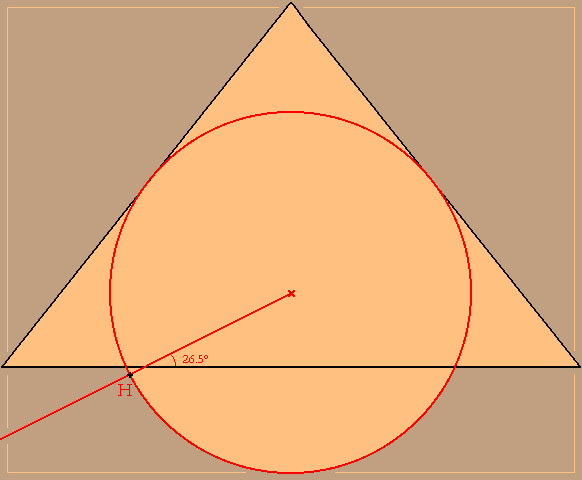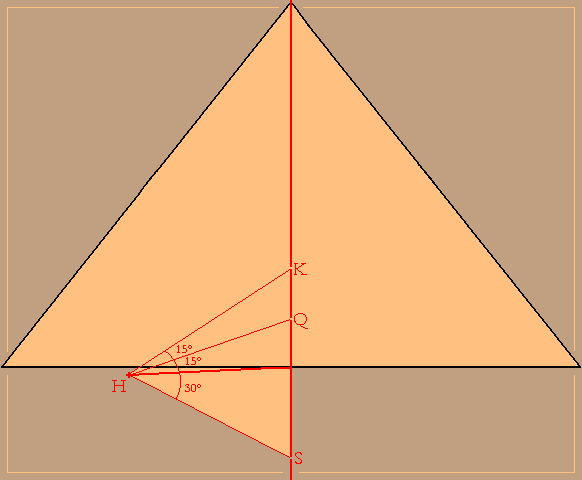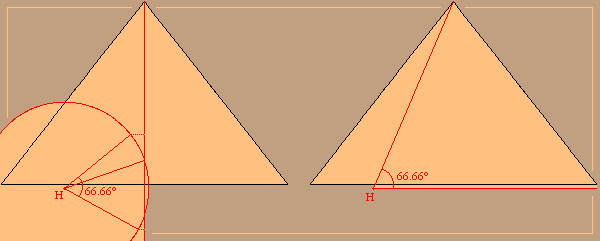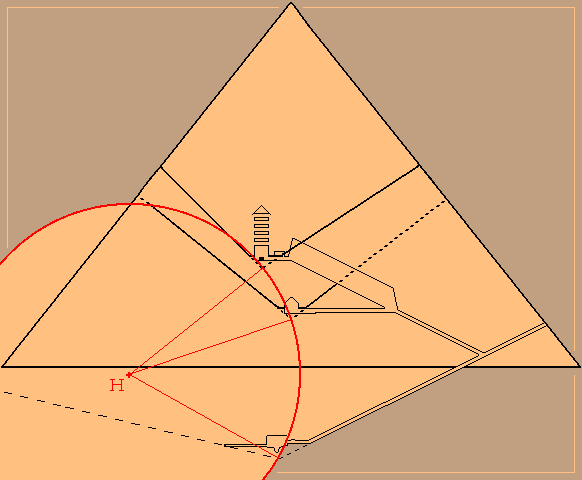
HEMON'S METHOD
A theory on the method used by Khufu's architect to design the plans of the Great Pyramid.
Hemon began by drawing a circle with a radius of 140 cubits (half the height of the triangle) centered at the heart of the pyramid. He then drew a straight line downwards and to the left of the center of that circle, with an angle of 26.5°, and thus obtained a point where the line crosses the circle. He used this point as a reference in order to lay out the whole internal architecture of the Great Pyramid. This point - let's call it point H (H for Hemon) - is located at 95 cubits from the south side and 6 cubits below the surface of the pyramid.

Next, he determined the height for each structure (the points of intersection of the shafts above which the chambers were added later on) along the central axis of the pyramid:
30° upwards from the pyramid's base for the uppermost chamber, 15° upwards for the "middle" chamber, 30° downwards for the lower chamber, making a total span of 60° centered on the base.

These heights were then placed on a circle with a radius of 131 cubits so that the angle of the span would be exactly the same as the one formed by point H and the apex of the pyramid to the horizontal plane: 66.66°.

66.66°/1.111=60°
Finally, he placed the chambers above each of the shafts' points of intersection and designed the passageways accordingly.

Obviously, it can be concluded that the Great Pyramid did not undergo several changes during construction, as is generally believed, but was architecturally conceived as a whole right from the beginning.
Copyright © May 1999 Jean-François Deschamps